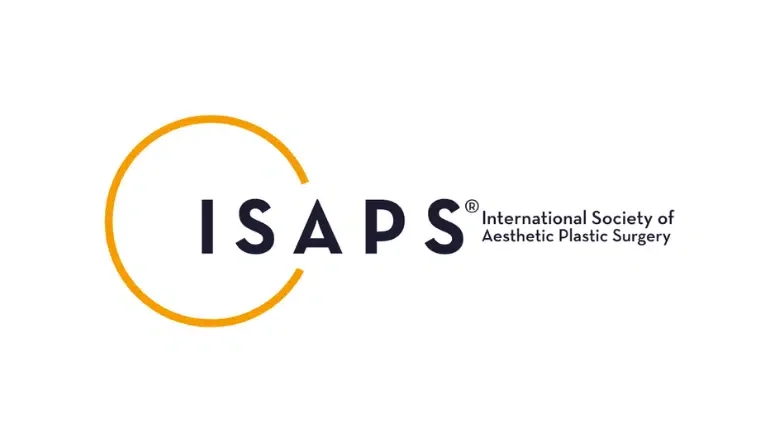Common myths about breast augmentation and implants
Breast augmentation surgery, also known as a ‘boob job’ is the most popular cosmetic surgery procedure in the UK. Centre for Surgery is one of the leading plastic surgery clinics in London, and our surgeons carry out hundreds of breast implants and breast fat transfer procedures each year at our Baker Street clinic in London. Here, we help dispel many of the myths surrounding breast augmentation to help you make better informed choices to help achieve natural-looking results.
RELATED: Are breast implants worth it?
Breast augmentation is known for producing incredibly high patient satisfaction rates, although it is still an invasive procedure involving certain risks which may cause many women to be fearful of undergoing surgery. There is an increasing amount of conflicting information surrounding the procedure, with several myths surrounding breast augmentation and achievable results. This can lead women to be put off the idea of having a boob job. Examples of false statements and myths about breast implants and breast enlargement surgery include the following:
- Silicone breast implants are dangerous and can cause cancer.
- Breast implants can prevent me from breastfeeding.
- Breast implants have a high risk of rupture.
- Breast implants will help me to achieve the same result as my friend’s breast augmentation.
- Breast augmentation is very painful.
These are just some of the common misconceptions about breast augmentation. This article covers all of the common myths about breast augmentation.
RELATED: Breast Implant Options
Breast augmentation – myths and facts
Saline breast implants are the best type of implant – MYTH
Saline breast implants are no longer used in the UK as they have a high risk of implant rupture and sudden deflation. Although saline implant rupture is not dangerous, revision surgery will be required to remove and replace the implants. Saline implants have a higher risk of replying and have a less natural feel than silicone implants. Although they are slightly cheaper, the vast majority of women prefer the natural feel of silicone implants.
Breast implants will make my breasts look fake – MYTH.
There are a wide variety of breast implants available, and they come in different sizes and shapes. Different breast implant shapes include round and teardrop implants. When correctly chosen, breast implants rarely look fake. As advancements in breast implant design and technology occur, breast implant results have become increasingly natural-looking. The best way to achieve natural-looking results after breast augmentation surgery is to have an in-depth consultation with your surgeon to discuss your needs and desires. Your surgeon will choose breast implants that are appropriate to your chest wall anatomy so that they do not appear fake. Women should avoid choosing implants that are excessively large for their body frame as this may increase the risk of a fake look.
RELATED: Round vs teardrop implants – choosing the best breast implant shape
Breast augmentation can only be carried out under general anaesthesia – MYTH.
Although breast augmentation is routinely performed under general anaesthetic at Centre for Surgery, it is possible to have the procedure with intravenous sedation and local anaesthesia if you are not keen on general anaesthesia. We use total intravenous anaesthesia at our clinic, which is considered one of the safest forms of general anaesthesia.
Breast augmentation can be performed by any type of surgeon – MYTH
Breast augmentation is one of the most commonly performed procedures in London, although the procedure certainly cannot be performed by any surgeon. We recommend you only choose a fully certified plastic surgeon to carry out your breast augmentation procedure. Be aware that a ‘cosmetic surgeon’ is not the same as a fully credentialled consultant plastic surgeon. Many cosmetic surgeons have only a basic medical degree and have not completed training in plastic surgery. The risks of substandard results are considerably higher by choosing surgeons inexperienced in this type of surgery. Although initially cheaper, when revision surgery is factored in, overall treatment costs can significantly exceed having surgery with a fully qualified UK plastic surgeon.
Always check if your surgeon is on the GMC specialist register for plastic surgery, and be sure to check reviews and testimonials of patients who have had breast augmentation surgery with them.
Breast implants will feel fake after surgery – MYTH
There are many different types of breast implants available in different textures, sizes, shapes, and internal filler material. Silicone breast implants are most commonly used in the UK. Each type of breast implant has pros and cons. The latest generation breast implants have a natural feel and consistency. Here at Centre for Surgery, we prefer to use Mentor implants due to their natural feel and excellent track record of safety.
Silicone breast implants are designed to mimic breast tissue’s natural feel and texture. Modern breast augmentation techniques further optimise the chances of achieving a natural look. Whether the implant is placed above or below the chest muscle, the feel of the breast is not significantly affected. Gone are the days of breasts that have a rockhard consistency or appear excessively mobile and wobbly, thanks to advances in breast implant design and manufacture.
I will not be able to breastfeed after having a breast augmentation – MYTH
This is a common myth found online, with many women believing they cannot breastfeed after having breast implants. It is entirely possible to breastfeed babies after breast augmentation surgery. Your surgeon is skilled in several techniques which are designed to preserve breastfeeding ability. If you have any concerns about breastfeeding after breast augmentation, you should discuss these with your surgeon at the consultation, as this can determine the type of surgical techniques used. The periareolar or around-the-nipple technique is avoided in women keen to breastfeed in the future.
RELATED: Different types of breast augmentation incisions
Breast implants should be changed every ten years or even earlier – MYTH
Older generations of breast implants often require replacement every ten years. The latest generation breast implants are designed to last longer than ten years. If your implants are not causing any problems and you are happy with their appearance, there is no need to have them removed even after ten years. If you develop capsular contracture or implant rupture, the implants must be removed and replaced with new ones. Some women may wish to have smaller or larger breasts in the future, and this is also a valid reason to seek revision surgery.
RELATED: What are common breast implant problems?
It is important to remember that the risk of implant-related complications increases after ten years, including implant rupture or capsular contracture. Without any breast implant-related problem, there is no medical reason to undergo breast implant removal or replacement. Your plastic surgeon can advise you about the need to have your implants removed if you are concerned.
RELATED: How do I know when my breast implants need replacing?
There is only one surgical technique for breast augmentation – MYTH
Breast augmentation surgery is tailored to the individual patient. The precise surgical technique used depends on the type of breast implant chosen and the anatomy of the breast and chest. There are different types of incisions for breast augmentation with different breast implant placement options, which will be discussed at your consultation.
Silicone implants are linked with autoimmune disorders – MYTH
Breast implants have not been linked with autoimmune conditions. There are several reports of breast implants being linked with a condition known as breast implant illness (BII). Subsequent extensive safety testing has shown breast implants to be completely safe to use. The link between breast implants and breast implant illness is still incompletely understood.
RELATED: What is breast implant illness?
I will be able to see breast implant results immediately – MYTH
Breast implant surgery involves extensive tissue dissection to create a breast pocket for the implants. This will invariably result in initial swelling and bruising in the early period after the procedure. This will often result in the breasts appearing higher up on the chest initially and is most commonly due to contraction and tightening of the chest muscles. As the chest muscles gradually relax, the breasts will begin to drop to their desired level. This process is known as “drop and fluff”. The final breast augmentation results take three to six months to become visible. Seeing the final results immediately after surgery is simply untrue.
RELATED: “Drop and Fluff” after Breast Augmentation
Breast augmentation is very expensive – MYTH
Breast augmentation, compared with other types of cosmetic surgery procedures such as a tummy tuck, is not as expensive as one may think. Centre for Surgery offers a full range of financing options, including 0% finance, which helps to make the procedure much more affordable for many people who may be unable to pay for the procedure outright.
RELATED: How to finance breast implants
I can choose any size of breast implant – MYTH
Breast implants come in various sizes, and the most popular sizes in the UK vary between 300cc and 350cc. Although, in theory, any size of breast implant can be chosen, it is not wise to choose breast implants that are out of proportion to your breasts and chest wall. Your surgeon will work with you to choose an appropriate size of breast implant that is optimally matched to your body shape. Larger breast implants have increased risks, including premature breast sagging and the risk of ‘bottoming out’. This is especially the case if you have a petite body frame.
Breast augmentation results in unsightly scarring – MYTH
All types of surgery involving incisions result in scars. Breast augmentation is no different. Your surgeon takes extra care to minimise the appearance of visible scarring after breast augmentation. Incisions are positioned in such a way that they are located in the natural skin creases beneath the breasts. This is known as the inframammary fold. A bra or bikini can easily hide breast augmentation scars. The scars may initially appear red and raised but will flatten over time to form a faint white line.
RELATED: What breast augmentation scars can I expect?
Breast implants are dangerous – MYTH
Years of safety data support the safety of breast implants for enhancing the appearance of the breasts. Despite false claims being made online, there is no evidence to support the myth that breast implants are not safe. The United States Food and Drug Administration, or FDA, have tested silicone breast implants for their safety and has fully approved their use for breast augmentation.
Breast augmentation is not suitable for older women – MYTH
Breast augmentation is equally suitable for women over 40 and women in their 20s. The key prerequisite is that all patients are in a good state of health, both physically and mentally. Having breast augmentation in your 40s helps to restore volume loss after pregnancy and breastfeeding. The procedure results are likely to last longer as most women will have completed their family by the time they reach 40 and beyond. This means the impact of pregnancy adversely affecting the results is no longer a problem.
RELATED: Breast augmentation for older women
Breast mammograms are impossible to interpret with breast implants – MYTH
Breast imaging technology using mammograms has significantly improved over the last few years, so most skilled radiologists can easily interpret the mammograms of women who have breast implants in situ. In many cases, implants are often placed behind the chest wall muscle and will not interfere with the breast tissue. In many cases, doctors often believe that having breast implants in situ makes interpreting mammograms much easier.
Breast augmentation is easy to perform and is a minor procedure – MYTH
Despite taking approximately 90 minutes to carry out, breast augmentation is not a simple or easy procedure. It must be carried out by a certified plastic surgeon experienced in breast surgery to get the best results. Recovery after surgery takes up to 6 weeks. You should make sure to follow your surgeon’s post-procedure care instructions to ensure your recovery and healing are as smooth as possible. Vigorous exercise must be avoided until a minimum of six weeks after surgery.
Breast augmentation is painful – MYTH
Many women believe breast augmentation is a painful procedure and often hold back from having the surgery as a result. Although breast augmentation is an invasive surgical procedure, our surgeons specialise in techniques to minimise pain or discomfort after surgery. During the procedure, you cannot feel anything, as general anaesthesia will be used to keep you asleep and comfortable throughout. This includes injecting local anaesthetic during the procedure to minimise any immediate post-procedure pain. Your surgeon will also prescribe prescription painkillers for you to take regularly in the recovery period. The vast majority of patients find they have no need to take painkillers one week after surgery.
RELATED: Is breast augmentation painful?
I will develop severe bruising and swelling after breast augmentation – MYTH
Breast augmentation involves a recovery period that can last approximately six weeks. During the first four weeks after surgery, it is normal to experience a certain degree of bruising and swelling. This is often mild in most cases. It is important to wear your postoperative bra as recommended to minimise swelling and bruising after breast augmentation. Any pain or discomfort can be easily controlled using prescription painkillers as directed by your surgeon. Severe bruising is rare after surgery and often signifies potential complications such as a haematoma. Arnica tablets can also be taken to minimise bruising after breast augmentation.
Over-the-muscle breast implant placement is best – MYTH
There is no one particular type of breast implant placement that can be considered ideal for all patients. Both options have pros and cons. The most appropriate placement will be determined after a physical examination. Over-the-muscle placement is suitable for women with sufficient breast tissue and may have mild breast ptosis or sagging.
Many inexperienced cosmetic surgeons can only offer the much simpler over-the-muscle placement as this is all they are trained in. Most breast augmentation procedures involve under-muscle placement.
RELATED: Breast implant placements – over or under the muscle?
Fat transfer to breasts is a safer and better option compared with breast implants – MYTH
Options for breast augmentation include both breast implants and fat transfer to breasts. Both are highly effective options for breast enhancement, and your surgeon may recommend a combination of both to achieve natural-looking results. This is known as hybrid breast augmentation. Each technique has its pros and cons, which will be discussed at your consultation. Fat transfer to the breasts is often preferred by women who are not keen on the idea of artificial silicone implants. Fat transfer involves minimal scarring and uses your own body fat, though the procedure is more expensive compared with breast augmentation with implants.
In any fat transfer procedure, not all fat survives the injection process. Fat necrosis is also a recognised risk of fat grafting, which may affect the appearance of the breasts. Fat necrosis may also result in cyst and nodule formation, which may develop calcification. This can sometimes affect the results of breast cancer screening. Unlike breast implants, fat grafting to the breast can only achieve a modest increase in breast size, usually a single cup size at most.
RELATED: Benefits of fat transfer to breasts vs breast implants
I will need wound drains after breast augmentation – MYTH
Unlike a breast lift or breast reduction, breast augmentation surgery does not involve the routine use of drains. This type of surgery does not result in the formation of a hollow space within the breast, which would increase the risk of a fluid collection forming. Only in very rare cases would your surgeon need to consider the need for wound rains. Our postoperative nurse easily removes them in these cases 48-72 hours after surgery.
Breast augmentation is only for women who want a bigger bra size – MYTH
Breast augmentation to enhance breast volume is only one reason for the procedure. Many women may have experienced significant weight loss or developed deflated breasts after pregnancy and breastfeeding. Breast augmentation is a way for these women to significantly boost self-confidence.
Breast implants may also be requested after having a mastectomy for the treatment or prevention of breast cancer. Women may feel less feminine after cancer surgery, and breast reconstruction with implants helps women to feel more comfortable about how they look.
Breast implants can help to get rid of saggy breasts – MYTH
Saggy breasts are common after significant weight loss, pregnancy, and breastfeeding. Breast augmentation on its own is not a suitable treatment for droopy breasts. A breast lift, with or without implants, is ideal for enhancing the size, shape, and fullness of the breasts. By sitting higher on the chest, the breasts appear perkier and more youthful. Your surgeon can advise you whether a breast lift or mastopexy is suitable to treat sagging breasts.
RELATED: How to get rid of sagging breasts after weight loss
Recovery after breast augmentation is very painful and prolonged – MYTH
The recovery period after breast augmentation is fairly smooth without significant discomfort. Any mild discomfort can be easily controlled with over-the-counter painkillers. It is important to follow your surgeon’s post-operative instructions to ensure your recovery is as smooth as possible.
RELATED: How long is breast augmentation recovery?
Pregnancy and breastfeeding will affect my breast implants – MYTH
Pregnancy involves significant hormonal fluctuations in both oestrogen and progesterone, which affects the size of the breasts. However, any change in breast size or shape does not affect the underlying breast implants. Modern breast implants are designed to withstand any extra pressure placed upon them during pregnancy so that they will remain unaffected throughout pregnancy and breastfeeding.
Pregnancy and breastfeeding can, however, affect the elasticity of breast skin, resulting in sagging breast tissue after breastfeeding. Although the implant itself is unaffected, a breast lift may be required to produce firmer and more youthful breasts.
RELATED: Can pregnancy affect my breast implants?
I will be able to achieve identical results as my friend’s breast augmentation – MYTH
Every woman has unique chest anatomy and has differing thicknesses of the chest wall musculature. Even though your friend may have achieved excellent results after breast augmentation, it is not possible to achieve the same results as every woman who has a unique body shape. Some women may be more athletic and muscular, while others may be leaner and more petite. Your surgeon will never be able to guarantee identical results unless you have chest wall anatomy and breasts that are completely identical to your friend’s, which is virtually unheard of.
Also, it is important to bear in mind what may look great for your friend may not look aesthetically appealing on you. An expert plastic surgeon can advise you on the most appropriate shape and size of implant for your body for optimum results.
Breast augmentation leads to a loss of breast sensitivity – MYTH
There are several side effects of breast augmentation, and there may be a temporary loss of nipple and breast sensation. As healing and recovery progress, sensation gradually returns. Some women mistakenly believe any loss of sensation is permanent, although this is very rare. When implants are placed, the skin, soft tissues and nerves stretch out, temporarily losing sensation. As people recover from the effects of breast augmentation, nipple sensitivity gradually returns. Permanent loss of nipple or breast sensation is a very rare complication of breast augmentation.
Breast implants will prevent my breast shape from changing over time – MYTH
Breast implants are designed to retain their original size and shape over a long period. The exception to this is if capsular contracture develops. The breast tissue itself continues to change over time due to the natural ageing process, weight loss, pregnancy and breastfeeding. The breasts naturally migrate downwards with time, leading to breast sagging. Sagging breasts can affect both breasts with implants as well as natural breasts. The risk of breast sagging is increased if you choose excessively large breast implants. This is why choosing an appropriate breast implant size that is not too big for your body frame is important.
Benefits of breast augmentation surgery
Breast augmentation is designed to enhance the size and fullness of the breasts and can be performed using either breast implants or fat transfer. The size and contour of the breasts can be improved, as well as the shape and contour of the breasts. There are several areas which patients should be aware of before undergoing breast augmentation surgery. All patients must be in a good state of physical and mental health. Smokers should be encouraged to stop smoking for four weeks before and after surgery to minimise the risk of complications. At the consultation, we would recommend asking as many questions as you need to gain a full understanding of what the procedure involves. This will help you to achieve the very best possible results. There are many benefits to having breast augmentation in London. The procedure can significantly enhance the appearance of the breasts. Common benefits which women experience after breast implant surgery include:
- Improved mental well-being – excessively small breasts can affect how women perceive themselves, and this can result in significant anxiety and even depression. Some women may develop a distorted image of their bodies, also known as body dysmorphic disorder. Breast augmentation surgery can help to boost mental health for women who feel uncomfortable about how they look.
- Boost in self-confidence – pregnancy, weight loss and the natural ageing process can result in deflated breasts. Women are often keen to achieve a pre-pregnancy appearance, which can result in a significant confidence boost.
- Improved body silhouette – breast augmentation can help to enhance the female figure in many types of fitted clothing.
- Improve confidence in social situations – Women who feel negatively about the appearance of their breasts may need them to avoid everyday social situations. This can affect both personal and professional relationships. Breast augmentation may help women regain their confidence and enhance their ability to form intimate relationships without feeling self-conscious.
Breast augmentation at Centre for Surgery
Centre for Surgery is the leading plastic surgery clinic in London and is home to some of the best cosmetic surgeons in the UK. Our surgeons perform hundreds of breast augmentation and boob job procedures each year at our state-of-the-art Baker Street clinic in Marylebone. If you would like to schedule an in-person consultation, call us today at 020 7993 4849 or fill out the contact form below. One of our friendly and knowledgeable patient coordinators will act as your personal point of contact throughout your patient journey with us at the Centre for Surgery in London.










